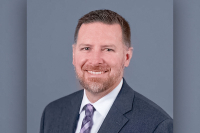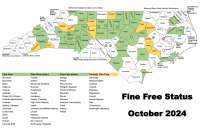Turn down the global warming, I’m freezing
By George Ivey • Guest Columnist
Many years ago on Capitol Hill, a politician said to me, “George, as you get older, the world feels colder, and you’ll like the idea of global warming. And it’s a lot easier than moving to Florida.” At the time, I thought he was kidding.
I’m not nearly as old now as he was then, but after last year’s endless snow and cold and much of the same this winter, I’m starting to agree with him.
Maybe you wonder if I’m kidding, too.
Sure, some people see one snowflake and declare global warming to be a myth. Others say “global warming” is the wrong term altogether; we should call it “global climate change,” because some places will get hotter, while others get colder. I’ve tended to accept that theory, but honestly, I never really understood why a hotter world would make some places colder.
That all changed when my fiancée and I visited the Pisgah Astronomical Research Institute near Rosman last spring. The PARI campus formerly served NASA and the Department of Defense in their satellite tracking and data collection efforts. Now the facility hosts people of all ages to advance the study of astronomy, science, and more. That particular evening, Jim Reynolds, an associate professor of biology at Brevard College and former Fulbright scholar, turned around everything I thought I knew about global climate change.
The key take-away message is this: be afraid, very afraid, especially if you don’t like snow and ice.
Reynolds reviewed the standard theory about an increase in greenhouse gasses trapping the earth’s energy, in turn causing glaciers and sea ice to melt, in turn causing sea levels to rise, among other things. But he was just, uh, warming up, you might say.
Reynolds then detailed how the melting sea ice; Earth’s varying orbit, tilt, and wobble; the movement of the oceans’ waters; and the planet’s predominant wind patterns might combine forces to launch a very sudden ice age — perhaps in less than 20 years. It’s the same basic concept as the “lake effect” snows of the Great Lakes, but on a much grander scale.
Reynolds covers far more theories and data than I can possibly try to explain in a short newspaper column, such as Croll-Milankovitch cycles and thermohaline circulation. Fortunately, for those of you who want to learn more, Reynolds has posted his entire PowerPoint presentation on his webpage: www2.brevard.edu/reynoljh/.
I’m glad we have people like Reynolds and places like PARI around here to help us learn more about the world beyond our little mountain valleys — even if what they present scares me a little.
Of course, one cold, snowy winter might prove to be the exception rather than the rule, but now that we’ve had two in a row, I’m wondering if Florida might be in my future after all.
(George Ivey lives in Haywood County and is a consultant and author of the novel Up River. Contact him at www.georgeivey.com.)





